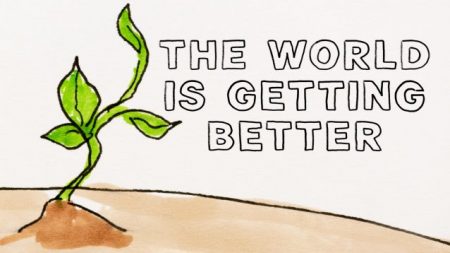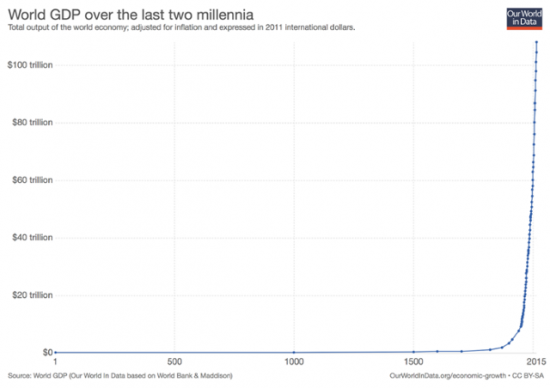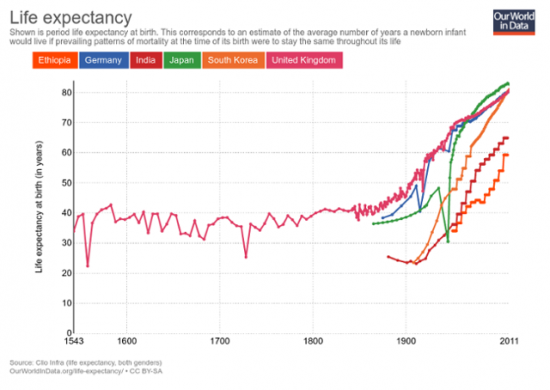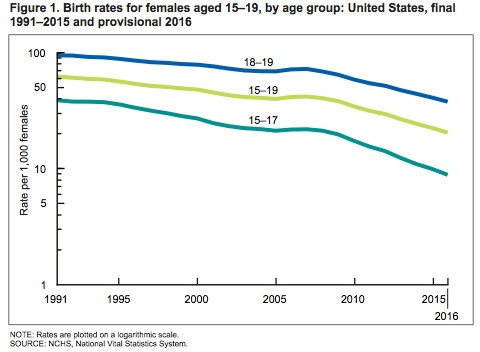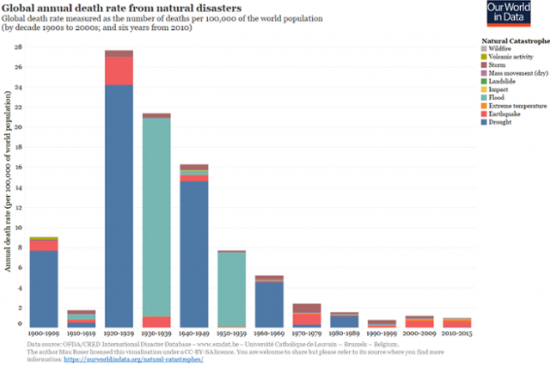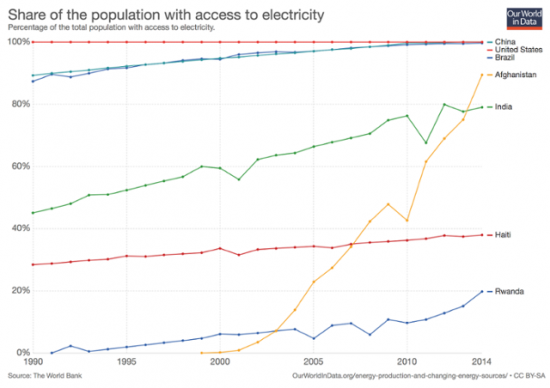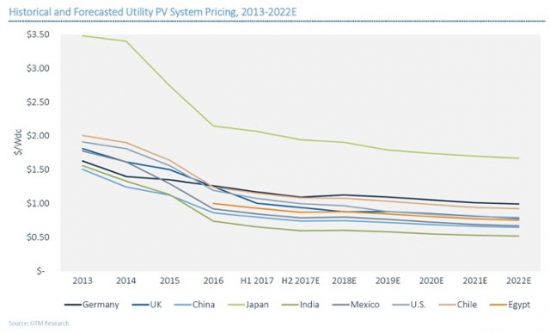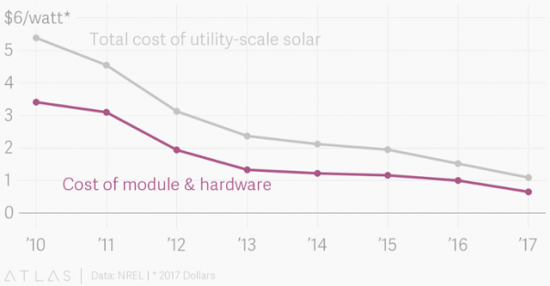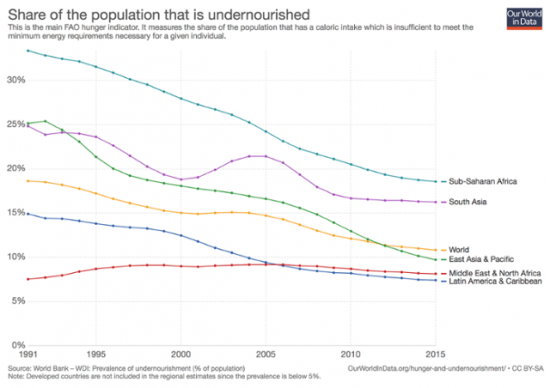October 12, 2017 – Just got back from a week away with my wife, daughter, and son-in-law, visiting family in Atlanta, Georgia. Happy to say there were no mass shootings while we were stateside, and that the presidential tweets focused on who was the bigger moron, Rex Tillerson or him. We did experience the tail edge of Hurricane Nate with lots of rain, ponding and a good deal of very wet clothes whenever we ventured outdoors. But the drive to and back from Atlanta was enjoyable. We even dropped in on the Neil Armstrong Air and Space Museum in Wapakoneta, Ohio, where my daughter posed in a space suit and told me that she had learned quite a bit from this nerdy visit.
So I’m back to posting new articles on the blog site and today am sharing content from an email I received from Peter Diamandis of Singularity University, the XPrize, and Planetary Resources. Diamandis is the author of Abundance: The Future is Better Than You Think, a book I reviewed some time ago on this blog site. In his email, Diamandis states that we are consumers of negative news at a ratio of 10:1 over good news stories. And because of this, our perspective of the human condition is inhibited. Diamandis believes this is a false view and shares what he believes are the positives that have occurred in 2017 so far.
Diamandis wants everyone to see the world as it is, one that is improving and he provides data to back up this claim. This is what he has written. If you or those near to you are negative-minded about the world we are in, then you need to read and share what follows.
Global Economy
Over the last 200 years, the world’s GDP has *skyrocketed* 100-fold. Humankind has never been more prosperous and productive.
The graph above depicts the economic output per person around the world over the last 2,000 years. Here we see exponential growth independent of war, famine or disease. Technology has driven much of this economic growth, and there are no signs of slowing.
Banking the Unbanked: One especially promising area of economic growth involves empowering the “unbanked,” the 2 billion people worldwide who lack access to a bank account or financial institution via a digital device. In September 2017, the government of Finland announced a partnership with MONI to create a digital money system for refugees. The system effectively eliminates some of the logistical barriers to financial transactions, enabling displaced people to participate in the economy and rebuild their lives. Refugees will be able to loan money to friends, receive paychecks and access funds using prepaid debit cards linked to digital identities on the blockchain without a bank.
Blockchain & Government: Governments are investing aggressively in digitization themselves. The small country of Estonia, for example, already has an e-Residency program. The digital citizenship lets residents get government services and even start companies in the EU without ever traveling or living there. In late August 2017, Kaspar Korjus, who heads up that e-Residency program, revealed the Estonian government’s exploration of creating an initial coin offering (ICO) and issuing crypto tokens to citizens to raise government funds. That same month, the Chinese government announced its intent to use blockchain technology for collecting taxes and issuing invoices. This builds on previous experiments China’s central bank is conducting with its own cryptocurrency.
Health
No matter where in the world you live, mortality rates have dropped precipitously in the last 300 years. In the following chart we life expectancy at birth in various countries. Just 100 years ago, a child born in India or South Korea was only expected to live to 23. Fast forward to today, and India’s life expectancy has tripled. South Korea’s life expectancy has quadrupled and now is higher than in the United Kingdom.
Plummeting Teen Births: Another measure of a nation’s health is how it responds to preventable public health issues. In the United States, teen births are down an impressive 51% over the last decade, going from from 41.5 births per 1,000 teenage girls in 2007 to 20.3 births per 1,000 teenage girls in 2016, and are down 67% since these statistics were first tracked back in 1991. I share the following graph because, by the numbers, teen girls who have babies will have a harder life than their peers who delay motherhood. As the U.S. Department of Health & Human Services notes, teen mothers are more likely to drop out of high school, rely on public assistance, and have children with “poorer educational, behavioral and health outcomes over the course of their life than kids born to older parents.”
As exponential technologies continue to advance, we’ll see even more healthcare breakthroughs. Here’s a sampling from this year:
- Robotics: Last month, a robot dentist in China successfully implanted 3D-printed teeth into a female patient’s mouth with “high precision.” The only human medical staff involvement included light setup and a pretest. Imagine when such robots are in every healthcare facility on the planet, delivering service for the cost of electricity.
- Virtual Reality: VR is entering the operating room. In July 2017, University of Minnesota doctors used VR to prepare for a challenging non-routine surgery, separating a pair of twins conjoined at the heart. Not only was the life-saving surgery a success, the VR prep gave doctors unforeseen insights that prompted them to accelerate the surgery by several months. It won’t be long until we refuse to have surgery completed by any human who hasn’t prepared in virtual reality using a personalized 3D model.
- CRISPR/Gene Editing: In August 2017, the Food and Drug Administration (FDA) approved the first-ever treatment using gene editing to transform a patient’s own cells into a “living drug.” Kymriah, a one-time treatment made by Novartis, was approved to treat B-cell acute lymphoblastic leukemia, an aggressive form of blood cancer that the FDA calls “devastating and deadly.” The FDA is currently considering over 550 additional experimental gene therapies. What happens to our healthy human lifespan as these life-saving treatments become universally accessible?
Environment
Thirty years ago, the world signed the Montreal Protocol to prevent the depletion of the Ozone Layer. Today, the U.S. Environmental Protection Agency (EPA) credits that agreement with preventing 280 million additional cases of skin cancer, 45 million cataracts, and 1.5 million skin cancer deaths between its signing in 1987 and the year 2050. Without the agreement the planet, it is estimated, would have been 2.2 Celsius (4 Fahrenheit) degrees warmer by 2050 resulting in more extreme weather events like droughts, floods, and hurricanes.
As the graph below clearly depicts, the global annual death rate from natural disasters has plummeted over the past century.
Why has this happened? It’s the impact of exponential technologies (satellites, sensors, networks, machine learning), which has enabled us to better image, predict, and model disasters. The models provide an early warning system, enabling citizens to flee to safety. First responders can react faster, sending supplies and food to remote areas in time. [It doesn’t always work out as evidenced by Hurricane Harvey, Irma, and Maria, as has become far too evident in the last few days.]
Drone technology is making it easier to count wildlife. Previously, animals were counted manually by researchers who spotted them from helicopters or prepositioned cameras to capture images for tabulation. Now drones capture footage, machine learning systems count different types of animals, and human volunteers develop algorithms to verify detections.
In Bengaluru, researchers at the Indian Institute of Science fight deforestation with camera-equipped drones that drop seeds in areas they otherwise wouldn’t be able to explore. The goal is to seed 10,000 acres within the region. What becomes possible when thousands of us participate in projects like the one in Bengaluru?
Energy
A key measure of economic growth, living standards, and poverty alleviation is access to electricity. The graph below uses data from the World Bank and the International Energy Agency to illustrate access to electrical power based on delivery and use of at least 250 kilowatt-hours per year in rural households and 500 kilowatt-hours per year in urban households. It shows that more people around the world have access to power than ever before and that the absolute number of those without access is dropping despite global population growth.
As you can see above, India has gone from 45% of the population with access to electricity in 1990, to nearly 80% in 2014. Afghanistan has even more dramatically improved, from 0.16% in 2000 to 89.5% of the population in 2014.
Renewable energy sources will make electricity even more accessible and cheaper until the entire world’s population will have access. In 2016, solar power grew faster than any other energy source. Around the world, prices for solar power continue to drop. The latest forecast from GTM Research reports prices of $2.07 US per watt in Japan to $0.65 per watt in India.
In 2017 alone, wind power became cheaper than nuclear energy in the United Kingdom with the cost of subsidies slashed in half since 2015. As the BBC reported, during the 2015 subsidy auction, “offshore wind farm projects won subsidies between £114 and £120 per megawatt hour.” Just two years later, in 2017, two firms committed to a guaranteed price of £57.50 per megawatt hour, more than 50% less. In the United States, the Department of Energy announced in September 2017 that utility-scale solar had officially hit its 2020 cost targets three years early with generation costs of $1 per watt and energy consumption costs of $0.06 per kilowatt-hour.
Food
Despite headlines, we’re making steady progress in the realm of conquering food scarcity and hunger. The graph below comes from World Bank data and shows the percentage of world population that has an inadequate caloric intake. Globally, 18.6% were undernourished in 1991. By 2015, that number dropped to 10.8%.
Time and again, technology is making scarce resources more abundant. Two examples from 2017 so far include:
- Human-Free Farms: In a 1.5-acre remote farm in the U.K., Harper Adams University and Precision Decisions recently harvested their first crop of barley. The twist? The farm is run autonomously. Instead of human farm workers, Hands Free Hectare uses autonomous vehicles, machine learning algorithms, and drones to plant, tend and harvest.
- Food From Electricity: In Finland, researchers are creating food from electricity. The team, formed of researchers from the Lappeenranta University of Technology (LUT) and the VTT Technical Research Centre of Finland, have created a machine that runs on renewable energy to produce nutritious, single-cell proteins. The system is deployable in a variety of environments hostile to traditional agriculture, and future iterations will be able to produce food anywhere, from famine-stricken deserts to space.
Diamandis believes a positive mindset turns problems into opportunities. He remarks that the data shows we live in a most exciting time to be alive and that the future will be even more exciting than the present.
So what’s missing from all this positivity? Diamandis talks about the Montreal Protocols but doesn’t address the bigger issue of carbon and climate change. How much of his positive expectations are built on humanity and its governing bodies resolving global warming?

